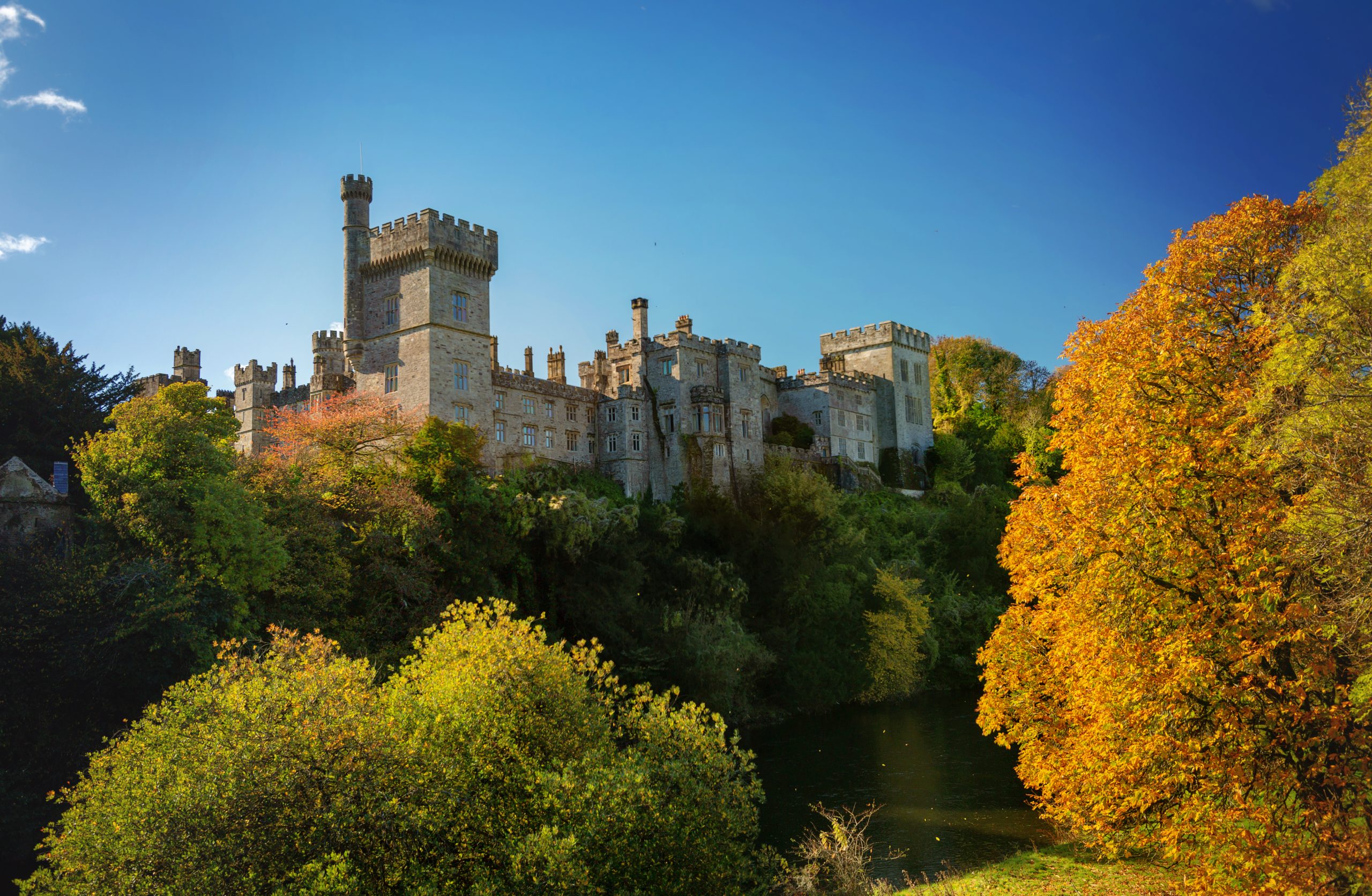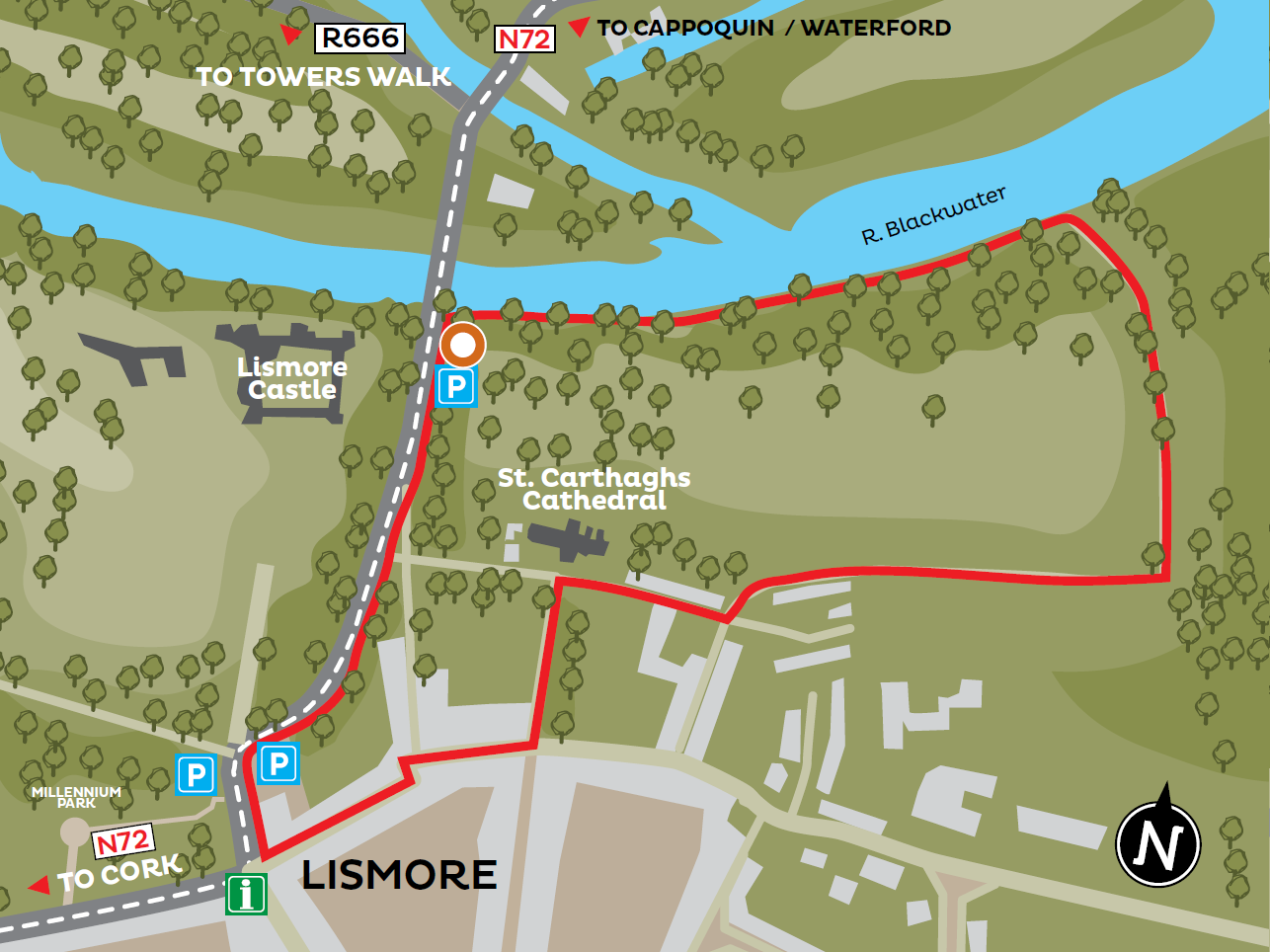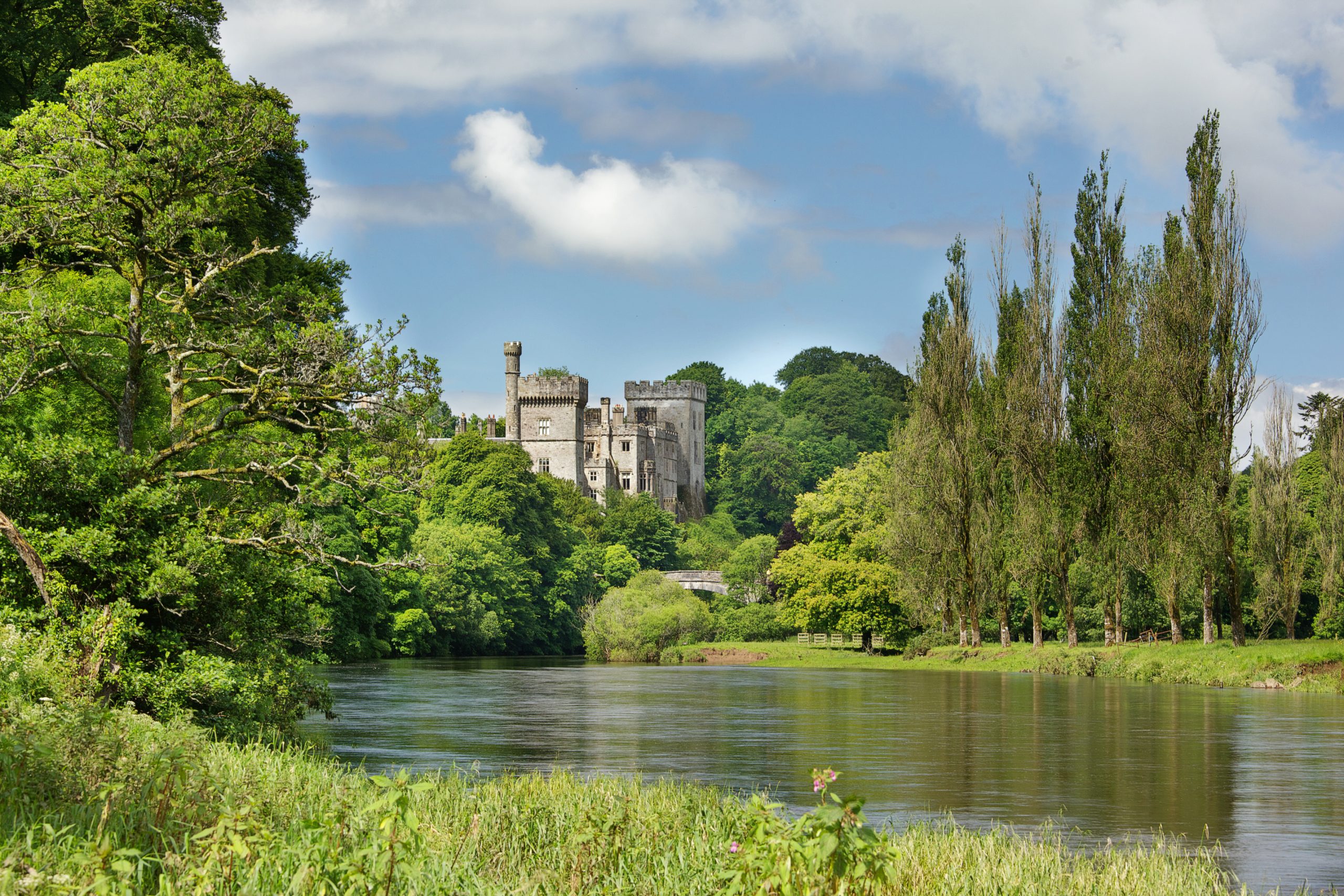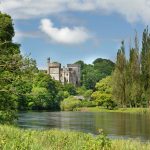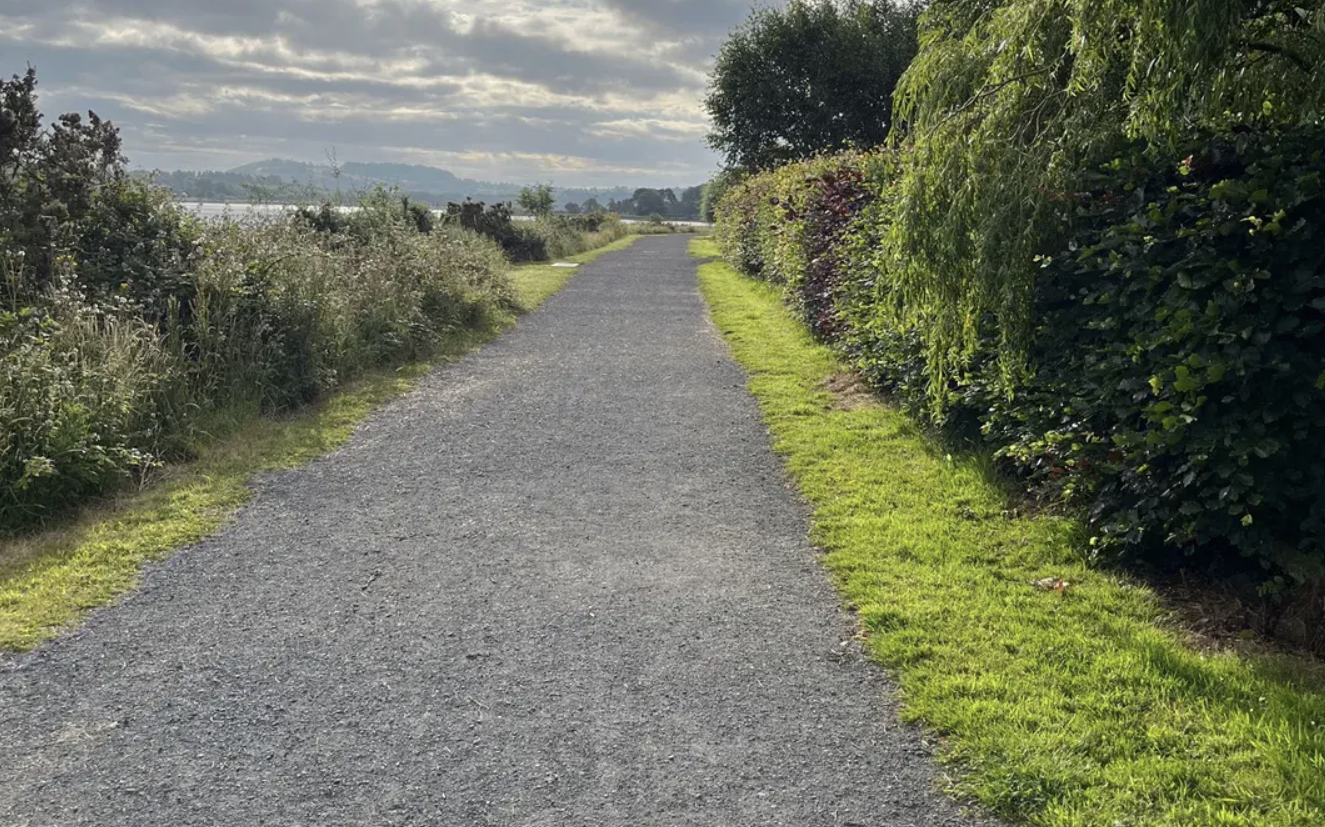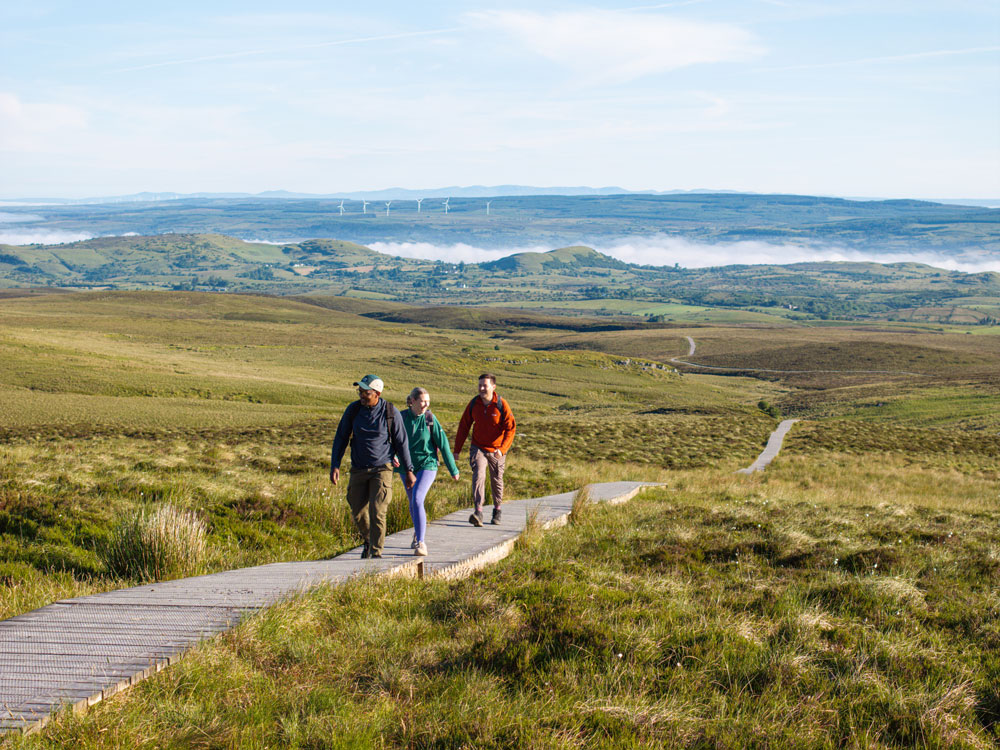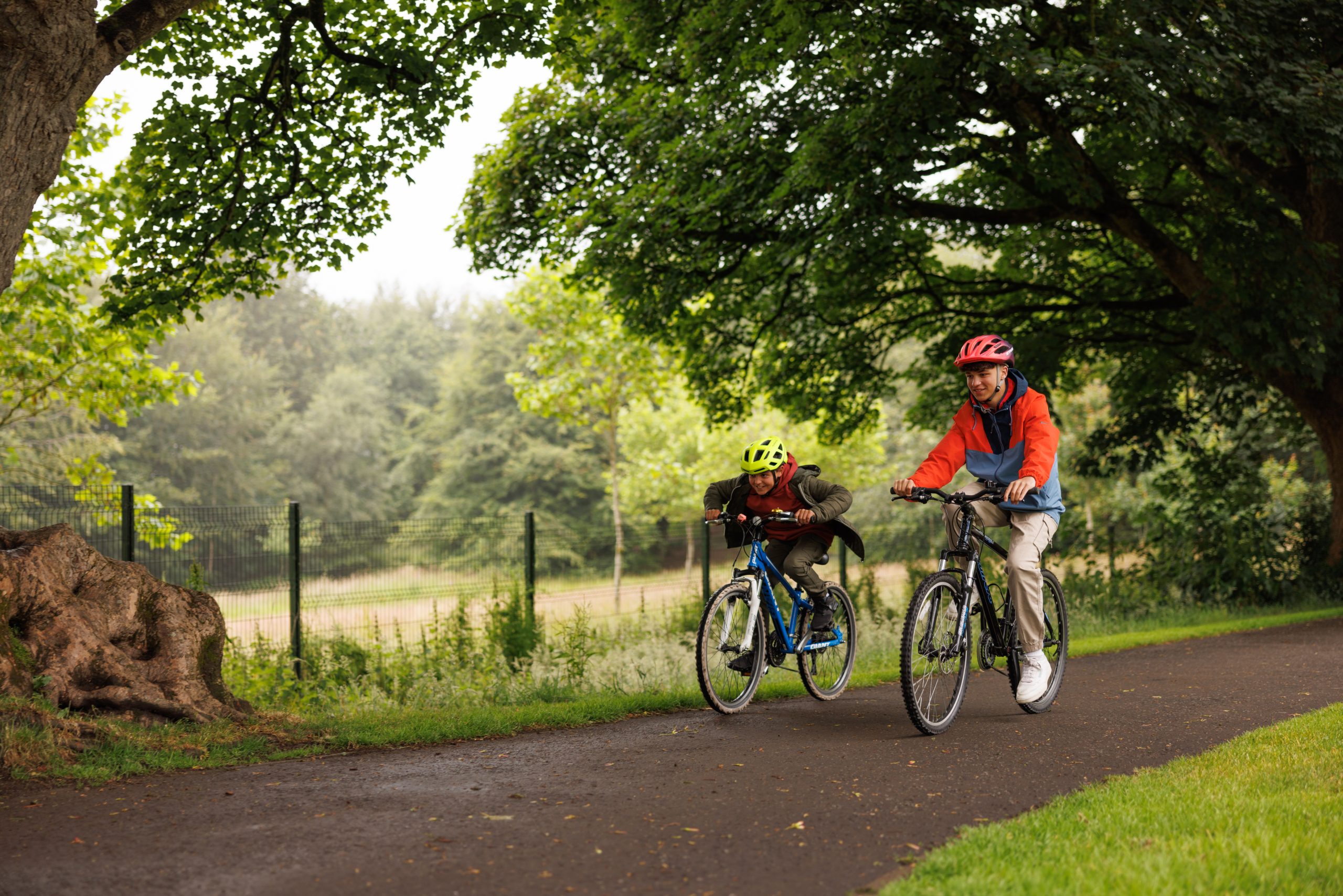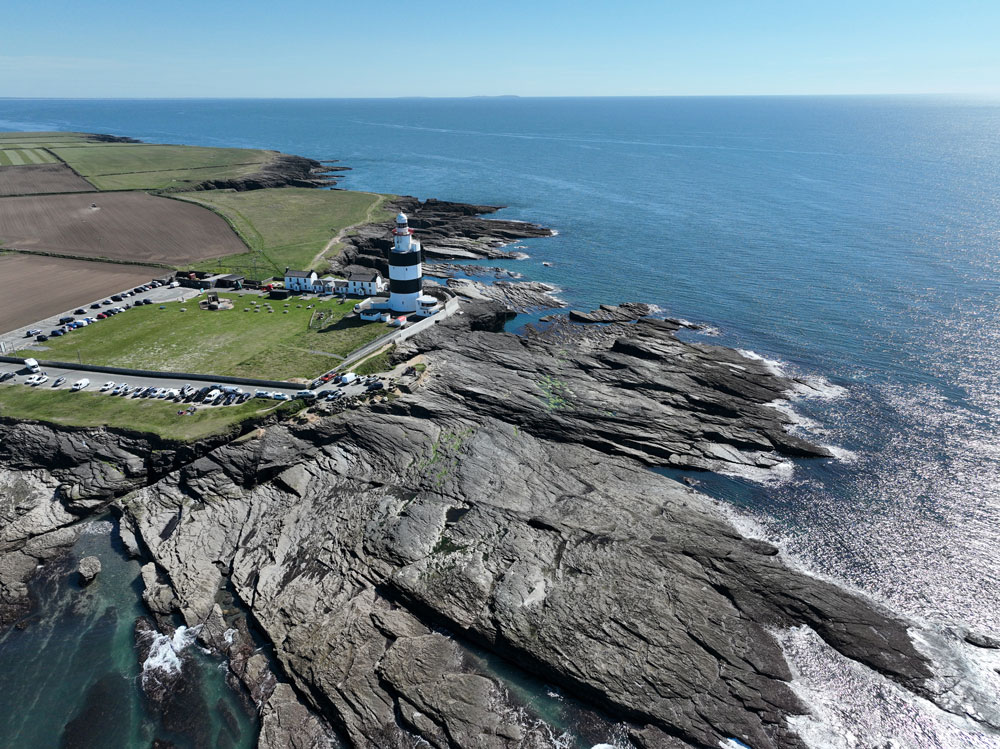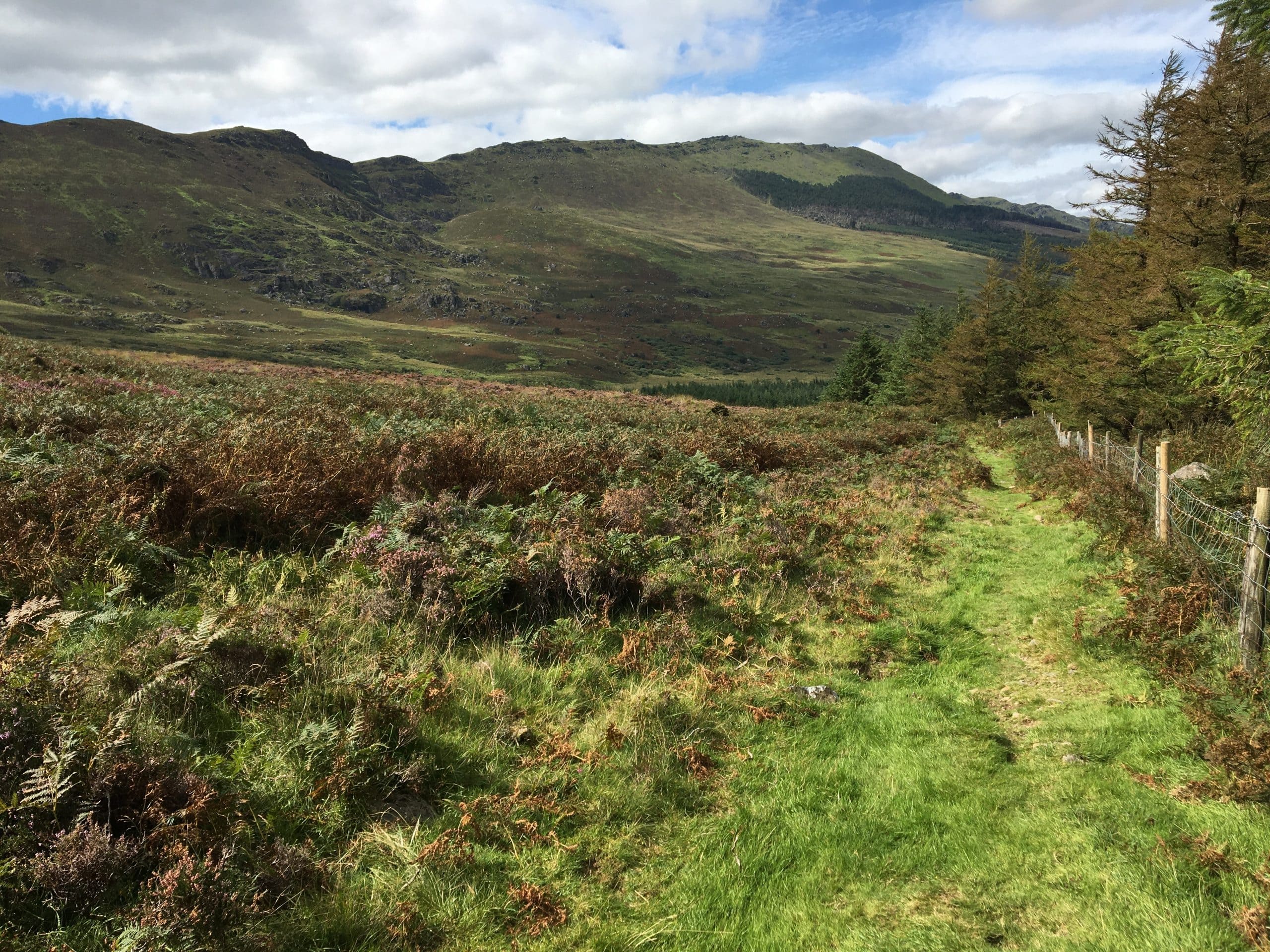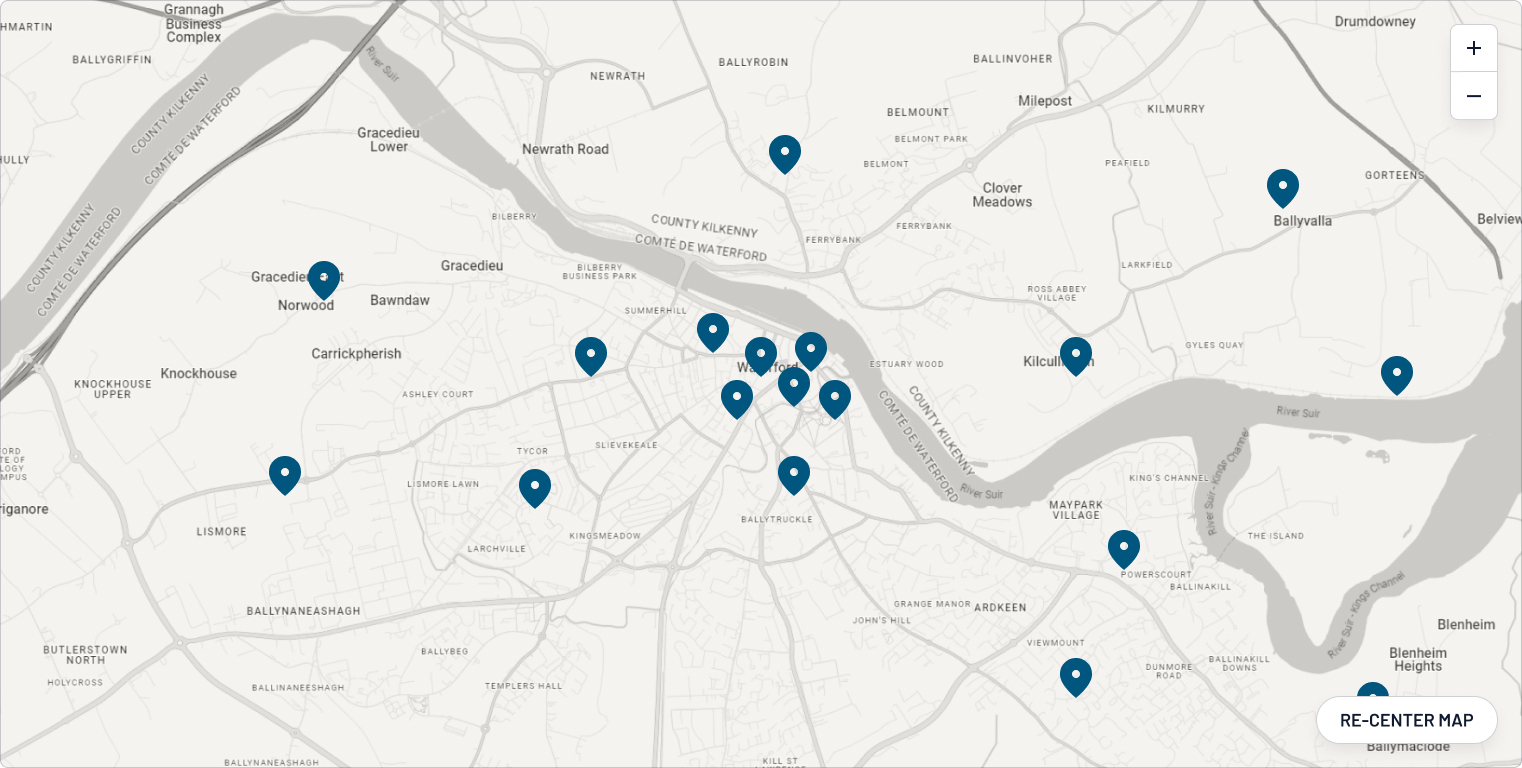A gentle 2km woodland loop along the banks of the River Blackwater, this scenic stroll near Lismore Castle is rich in flora and history. Named after Lady Louisa, daughter of the 7th Duke of Devonshire, the trail passes the historic Spout spring and is perfect for families and leisurely walkers.
Lady Louisa’s Walk
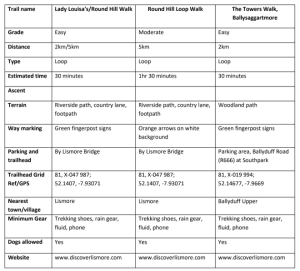
The Heritage Town of Lismore enjoys one of the prettiest positions of any Irish town, overlooking the River Blackwater beneath the Knockmealdown Mountains. Founded by Saint Mochuda, also known as St. Carthage, the town is renowned for its early ecclesiastical history – something you can dip into with a visit to its medieval cathedral, notable for a vibrant stained glass window by the pre-Raphaelite artist, Edward Burne-Jones. But it’s Lismore’s Anglo-Norman castle that inevitably makes the lasting impression. This is one of Ireland’s iconic sights. Dating from the 12th century and home over the years to both Sir Walter Raleigh and Robert Boyle (the Father of Modern Chemistry), the castle passed to the Duke of Devonshire in 1753 and continues to peer down imperiously over the river. The castle itself is closed to visitors, but you can visit its gardens and contemporary arts space.
There are a number of marked walking trails in and around the environs of Lismore and the surrounding countryside where visitors can immerse themselves in this wonderful setting:
Lady Louisa’s and Round Hill Walk
These walks take a similar route with the Round Hill Walk being the longer of the two.
Lady Louisa’s Walk is primarily a woodland walk along the river bank. One can expect to find woodland plants such as beech, ash, ferns, spindle tree, holly and ivy as well as wood sorrel, golden saxifrage and wild garlic but to name a few. After a short walk along the riverbank and through a kissing gate walkers can choose to turn away from the river, uphill back towards the town.
Alternatively you can continue along the river bank a little further towards The
Round Hill, where walkers may continue to spot herons, swans, mallards, water hens, snipe, tern, kingfisher and many more water birds. The River Blackwater is renowned for its salmon fishing and fishing stands and stiles may be noted along the riverbank. A stand of mature pine trees on top of a mound will indicate that you are approaching the famous Round Hill, a great mound or earthwork covering two or three acres in extent. Walkers can then make their way a little further from the river bank towards the road where a footpath will guide them back towards Lismore.
The Towers Walk, Ballysaggartmore
This charming, gently undulating, woodland walk can be found about 3.5km outside of Lismore on the Ballyduff Road. This is an ideal location for a pleasant walk and picnic at any time of year. The main avenue is planted with a row of tall shaking poplars and rhododendron, interspersed by pheasant berry, snow berry, holly to name but a few. A diverse range of tree species to be noted including, ash, oak, sycamore, horse chestnut, spruce, fir as well as shrubs of holly, hazel and bramble. Take your time to enjoy the sights and sounds of nature.
How to Get There
Lady Louisa’s/Round Hill Walks:
From Lismore Heritage Centre, follow the N72, past the spout to the start of the bridge.
Lady Louisa’s walk is located on the right just before the bridge. Parking is available.
The Towers Walk:
Take theR666 from Lismore to Ballyduff and Fermoy, sign-posted at the bridge near Lismore Castle. Continue for approximately 3.5km to the Towers entrance on the right.
Did You Know
- Lady Louisa was the daughter of the 7th Duke of Devonshire, ancestor of the current owner of Lismore Castle, the 12th Duke of Devonshire.
- The first monastic settlement in Lismore was founded by St. Carthage at Round Hill adjacent to the river, where he built a ‘Lios’, an Irish term used to describe a fort built of earth. Legend has it that an old woman whom Carthage met, told him that he would be founder of a ‘Lios Mor’ meaning great fort in Irish. The monks built small beehive huts on the banks of the river and the place extended to become a great university city and a place of holiness.
- Ballysaggartmore Towers are imposing gothic style gate lodges built in 1850 by Arthur Kiely Usher for his wife. The gate lodge and towers provide a fairy tale setting which reflects the sad period in Irish history where extravagance and starvation lived side by side.
Map
Overview
A gentle 2km woodland loop along the banks of the River Blackwater, this scenic stroll near Lismore Castle is rich in flora and history. Named after Lady Louisa, daughter of the 7th Duke of Devonshire, the trail passes the historic Spout spring and is perfect for families and leisurely walkers.
Lismore
Location
type
Grade
distance

